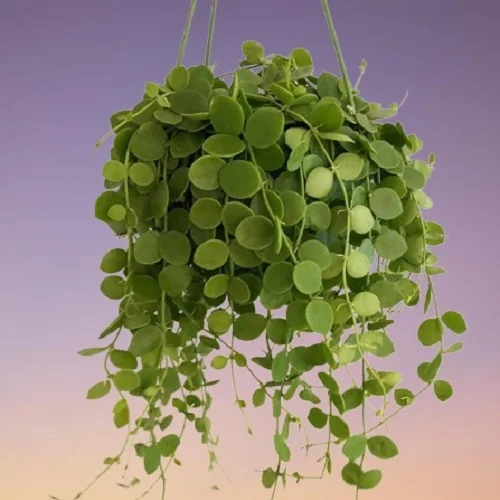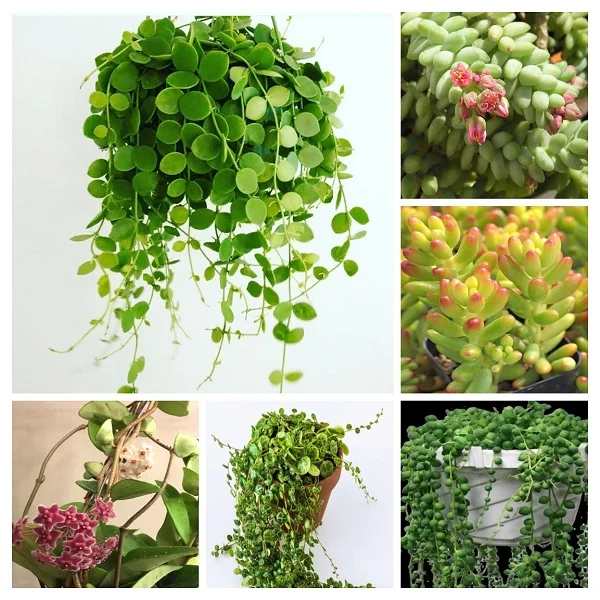12 Reasons Why String of Nickels Plant Leaves are Falling Off and How to Fix Them
Some links in this post may be affiliate links
String of Nickels Plant is dropping leaves due to pests infestations, too little light, nutrients deficiency, inconsistent watering, soggy soil, temperature stress, root-rot among others.
Dischidia nummularia grows best in bright light with 4-6 hours of morning sunshine, warmth of 18-260C, humidity of 50-55% and moderately moist, fertile, well-drained succulents soil with two feedings during the growing season. Learn how to grow and care for String of Nickels Plant.
If the right growing conditions are not given, String of Nickels Plant may drop its leaves. We have herebelow outlined 12 reasons why String of Nickels Plant leaves are falling off and their remedies.

12 Reasons String of Nickels Plant is Losing Leaves
1. Pest Infestations
String of Nickels Plant is prone to spider mites, scale insects, aphids and mealybugs. These pests attack the new growth from where the suck the plant sap. This causes the plant to become dehydrated and results in wilting and leaf drop.
Solutions
Regularly inspect your String of Nickels Plant for the pests and take timely control measures.
Isolate the affected plant to prevent spread to other plants.
Treat the infested plant for the pests with neem oil or insecticidal soap as directed by the manufacturer.
Regularly damp-wipe the leaves with a soft cloth to discourage the pests.
Maintain the plant well pruned to get rid the hiding and breeding places for these pests.
2. Too Little Light
Adequate light is needed for making food that is required for energy and growth. Insufficient light implies that the plant cannot make enough food for energy and growth.
In an attempt to save energy, the plant begins to drop leaves. This way, it saves the available energy for the vital functions to keep alive.
Solutions
Cut back the bare stems to encourage new growth and a bushy, compact growth.
Move your String of Nickels Plant to a brighter spot where it will receive bright light with some morning sunshine or instal a grow light if you do not have adequate lighting in your home.
Regularly turn the pot to ensure that the plant absorbs enough light for photosynthesis on all sides to prevent leggy growth.

3. Poor Quality Soil
Poor quality soil does not drain easily and easily becomes compacted or soggy. When soil gets soggy it can result in root-rot which is characterized by yellowing and dropping leaves.
Solutions
Pot your String of Nickels Plant in good quality soil that is loose, free-draining and rich in organic matter. Cactus and succulents mix are ideal for this plant.
4. Nutrients Deficiency
Underfeeding String of Nickels Plant implies that the plant is not getting enough nutrients need for growth and energy. Inadequate nutrients in the actively growing tips causes nutrients to be withdrawn from the older lower leaves which begin yellowing and fall off.
Solutions
Feed your String of Nickels Plant with a slow release fertilizer twice in spring and summer. Take care not to follow the instructions on the label of the plant food.
5. Soggy Soil
Soggy soil (excess water in the soil) reduces the oxygen concentration in the rootzone causing the roots to die. Dead roots cannot take up water and nutrients needed for the food making process. Lack of enough food causes the plant to drop its leaves.
Solutions
Pot your String of Nickels Plant in a pot with a drainage hole and well-draining succulents soil.
Lessen watering in fall and winter to maintain the soil slightly moist as growth is minimal at this time.
6. Inconsistent Watering
Underwatering and overwatering are both detrimental to the growth of the plant. They both result in yellowing and loss of leaves.
Solutions
Water your String of Nickels Plant immediately and it should recover.
Thereafter, water the plant when the top 2-3 inches of soil dry out but do not allow the soil to dry out completely. Do not water on a schedule.
7. Temperature Stress
Extreme temperatures; either too high or too low due to drafts will affect the normal functioning of the plant systems. Too high temperatures will cause excessive loss of water leading to wilting and leaf drop. Too low temperatures result in reduced growth, yellowing and leaf drop.
Solutions
Keep your String of Nickels Plant away from sources of drafts like drafty winds, AC vents, open doors, hot surfaces, hot air vents and others.
Maintain a warmth of 18-260C; a room temperature that is comfortable for you is ideal for the plant.

8. Cold Water
String of Nickels Plant is native to the tropical regions where the temperatures remain constantly warm. Therefore, watering this plant with cold water will shock the plant causing stunted growth and dropping leaves.
Solutions
Water your String of Nickels Plant with water that is at room temperature to avoid cold shock and eventual death of the plant.
9. Salts Buildup
Excess salts in the soil will cause the roots to die due to fertilizer burn. The dead roots cannot take up nutrients and water required for photosynthesis. Without, adequate food for growth and energy, the plant begins to lose leaves to save energy.
Solutions
Use chemical free water like rain water or filtered water to avoid introducing chemicals into the soil.
Do not fertilize in fall and winter to prevent accumulations of salts as growth is reduced at this time.
Regularly flush out the salts by running a stream of water through the soil until it comes out through the drainage hole. Repeat the process several times to clear the soil of most of the salts.
10. Root-rot Disease
String of Nickels Plant is prone to root-rot disease which is prevalent in soggy soil. It is characterized by wilted, discolored leaves, corky swellings under the leaves and dropping leaves.
Soggy soil reduces oxygen concentration in the soil which causes the roots to die. Once the roots die, they cannot take up water and nutrients to the leaves. The leaves begin to wilt and eventually drop.
Solutions
Slip the String of Nickels Plant out of its pot and inspect the roots. Brown-black mushy roots indicate root-rot, trim them off.
Treat the healthy roots with a copper-based fungicidal solution as recommended by the manufacturer..
Disinfect the pot or use a fresh pot to repot the plant in fresh well-draining soil.
Do not water the plant to keep it dry for some time before resuming watering.
11. Being Root-bound
A root-bound plant is one whose roots have filled the pot and there is very little soil to hold water when you water the plant. Therefore, there is no water for the plant to take up to the leaves. The leaves loss their stiffness and they wilt and drop.
Solutions
Check the bottom of the pot for roots growing through the drainage hole and repot the String of Nickels Plant into a pot one size larger than the current one. Take a look at these succulents pots on Amazon.
You may divide the large plants into several sections and plant the sections in individual pots to propagate new plants.
12. Repotting Shock
Repotting may cause the String of Nickels Plant some shock resulting in some leaves wilting and dropping before it can adjust the new growing conditions.
Solutions
To minimize repotting shock, water your String of Nickels Plant thoroughly one day before repotting as a well hydrated plant experiences less shock after repotting.
Do not make too many changes at once. For instance, after repotting, maintain the plant in the same location until it is well established before moving it to a new location.
Conclusion
Leaf fall on String of Nickels (Dischidia nummularia) is caused by overwatering, underwatering, temperature stress, low humidity, pests, diseases among others. The good news is that most issues can be easily fixed with proper adjustments.
Frequently Asked Questions
1. Should I remove fallen leaves from my String of Nickels?
Yes, removing fallen leaves helps prevent spread of diseases and pests.
2. Can I propagate fallen leaves?
No, but you can propagate healthy stem cuttings by placing them in moist soil or water.
3. Why are my String of Nickels leaves turning yellow?
Yellow leaves usually indicate overwatering or poor drainage. Let the top 2-3 inches of soil dry before watering again
4. How do I know if my String of Nickels is dying?
Signs of a dying String of Nickels include severe leaf drop, blackened roots (root rot), and soft, mushy stems. Adjust care immediately.
5. How often should I water my String of Nickels?
Do not water on a schedule. Water your String of Nickels when the top 2-3 inches dry out.
6. Does String of Nickels need direct sunlight?
No, String of Nickels prefers bright indirect light. Direct sunlight can scorch the leaves.
7. Can String of Nickels survive in low humidity?
String of Nickels prefers moderate humidity, but it can adapt to low humidity if watered correctly.
You liked it? Share on social media.
Related Content
Amazon Associates Disclosure
Homeplantsguide.com is a participant in the Amazon Services LLC Associates Program, an affiliate advertising program designed to provide a means for sites to earn advertising fees by advertising and linking to amazon.com.




